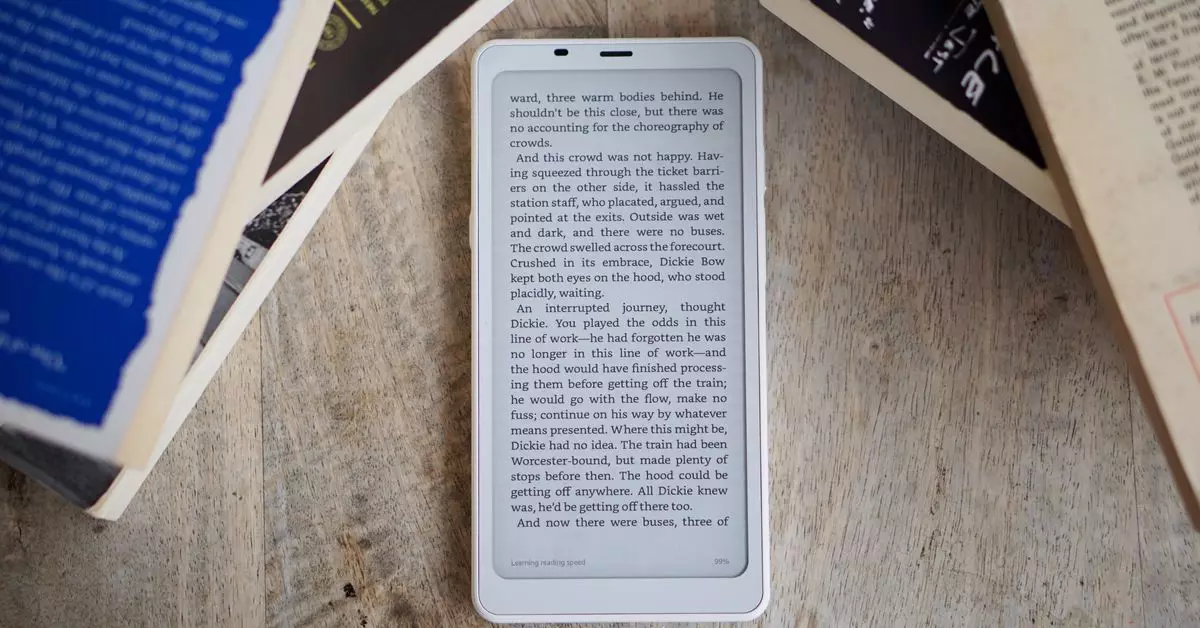The evolution of e-readers has been marked by innovation and creativity, but with the Boox Palma 2, one might question whether we are witnessing true progress or merely a recycled version of its predecessor. Onyx, the manufacturer, has once again attempted to bridge the gap between traditional e-books and modern technology with a smartphone-sized e-reader, yet critics may argue that the Palma 2 hardly ventures beyond familiar ground. As we dig deeper into the nuances of this device, we will explore its merits and shortcomings, reflecting on whether the improvements truly justify its existence.
First impressions matter, and while the Boox Palma 2 may capture attention visually, its physicality leaves much to be desired. The device retains the same 6.3-inch E Ink Carta display that readers appreciated in the original Palma. It is built for comfortable reading, with an easy-on-the-eyes interface that effectively mimics the feel of a classic paperback. However, one can’t help but notice that the plastic construction feels rather subpar. At a price point of $279.99, you might expect a sturdier design that gives users confidence in its durability. Instead, it feels flimsy—a potential red flag for anyone contemplating a long-term investment in this gadget.
Technology Under the Hood: A Minor Upgrade?
The introduction of a newer octa-core CPU and Android 13 could insinuate a leap in performance; however, the real-world experience suggests otherwise. Though benchmark tests indicate slight improvements—particularly in graphics—the everyday usage just doesn’t reflect any substantial speed benefit. Apps load gradually, and basic functionalities, such as page turns and taps, can sometimes feel sluggish. In this regard, the Palma 2 doesn’t mark a significant evolution; rather, it aligns itself with the old adage, “better the devil you know.” This performance gap raises an interesting question: Has Onyx done enough to ensure that the Palma 2 feels relevant in today’s fast-paced digital landscape?
The User Experience: A Mixed Bag of Features
Despite the controversies surrounding performance, the Palma 2 manages to retain functionalities that users have come to appreciate. It continues to support a variety of apps from the Play Store, a feature that makes it a viable choice for reading books, scanning documents, and even enjoying music—all without drowning in the distractions typical of a typical smartphone. For individuals seeking a minimalist device that keeps digital clutter at bay, this feature serves as both a blessing and a lifeline.
However, the breadth of options comes with caveats. The camera included is serviceable for document scanning and QR codes but falls disappointingly short for standard photography. Furthermore, issues with the newly integrated fingerprint reader reveal a lack of finesse in its practicality; it is often slow and less responsive than one might expect from technology introduced in 2023.
As the landscape of e-readers and portable technology continues to evolve, it’s disheartening to note that the Palma 2 appears to tread familiar paths without taking bold strides toward innovation. The exclusion of significant upgrades could be perceived as a considerable missed opportunity. Features like a SIM slot could transform this e-reader into a fully functional minimalist device capable of enhancing user autonomy.
Furthermore, a reconsideration of storage capacities and hardware materials could elevate the Palma 2 from a good product to a great one, one worthy of its price tag. Users are left to wonder why Onyx hasn’t embraced the potential to refine the user interface, eliminate unnecessary apps, and streamline settings that could optimize the entire user experience.
Concluding Thoughts: A Device for Niche Enthusiasts
Ultimately, the Boox Palma 2 holds an audience that resonates with its constraints and capabilities. While that audience may appreciate its user-friendly functionalities and long battery life, they’re also likely to understand the limitations inherent within it. If someone already owns the original Palma, the necessity to upgrade becomes questionable. However, for newcomers who appreciate the intersection of e-reading and Android compatibility, the Palma 2 may represent the best option available at this time.
As technology enthusiasts await advancements comparable to those seen in other segments, the hope remains that competition will arise to stir innovation within the e-reader market. Until that day comes, the Palma 2 will suffice, allowing users to immerse themselves in their literary worlds while steering clear of the endless distractions of mainstream applications. It’s a reliable companion, but it leaves you desiring more from the future of digital reading.

